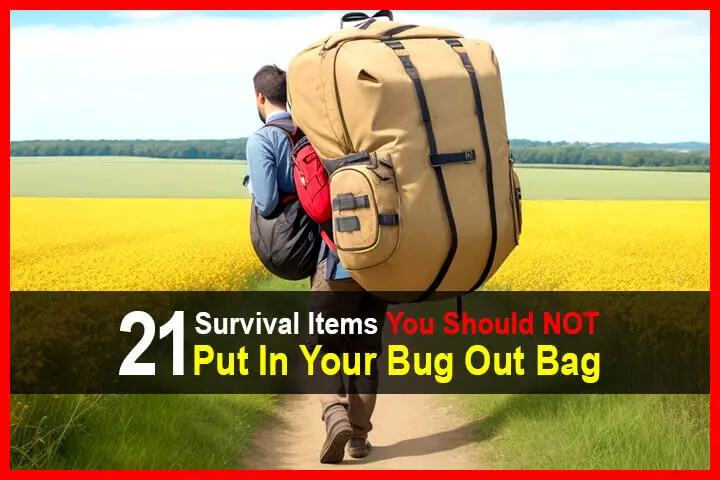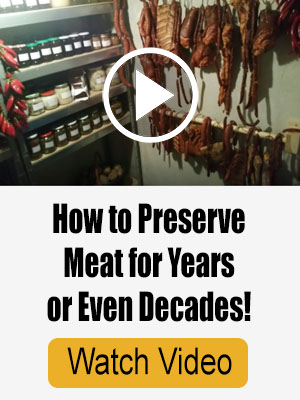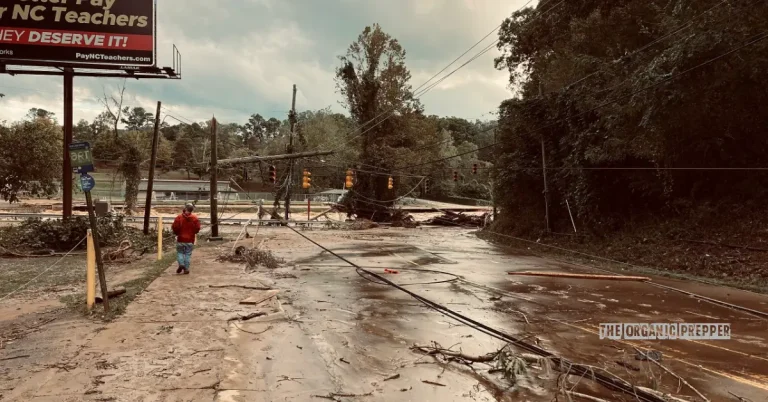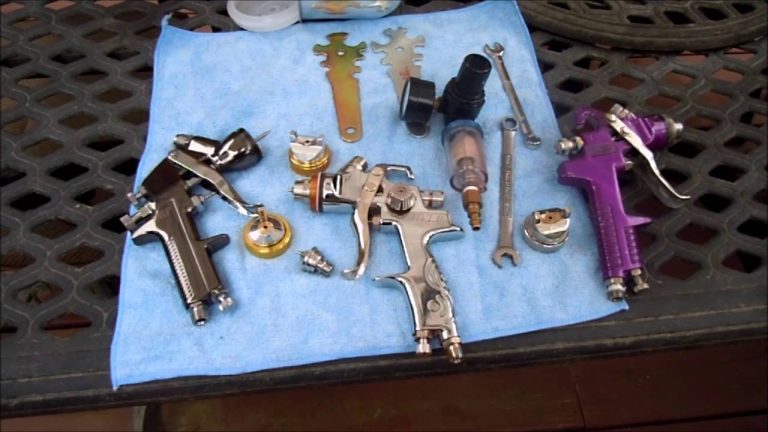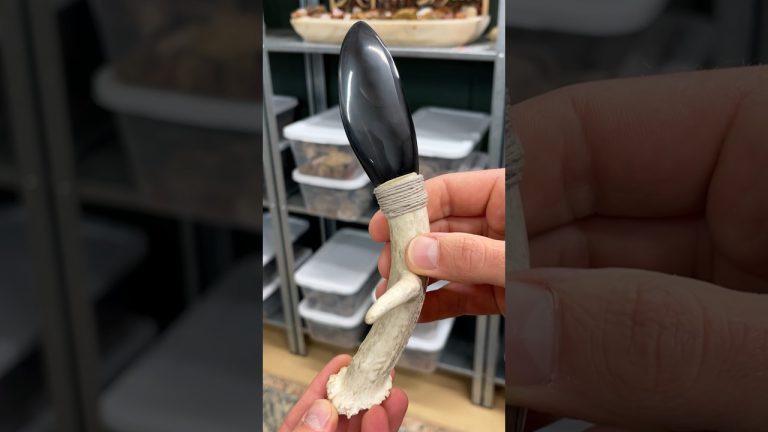Estimated reading time: 9 minutes
A while ago I wrote an article called 100 Survival Items You Forgot To Put In Your Bug Out Bag. Several readers complained, saying things like, “How the hell am I supposed to fit all this stuff in my bug out bag?” Well, you’re not. The point of the article is to tell people about any items they would have included but either forgot about or hadn’t considered yet.
Every bug out bag should be 100% unique. Sure, there are some basic items that every bug out bag should have (food, lighter, water filter, flashlight, etc.), but you should customize your bag based on where you live, what type of disaster is most likely to occur in your area, and how much weight you can carry over a long distance. Many preppers forget about that last point.
If your bag is so heavy that you can’t carry it more than a few miles, you’ll have to ditch some of the items, anyway. And what’s going to happen if you have to run from attackers, jump walls, and climb fences? Having a bag that’s too heavy could get you killed.
Ideally, a bug out bag should weigh about 15% of your body weight, assuming you’re in decent shape. 20% of your body weight should be the absolute maximum.
So despite the impression many people got from my “50 Items” article, I don’t think you should pack your bug out bag with as many items as possible. In fact, I think you should check your bag for any non-essential items with a large weight-to-space ratio and remove them. To that end, here’s a list of survival items I’ve seen in various lists online that, in my opinion, you don’t really need in your bug out bag.
Note: These are merely suggestions so please don’t follow my advice blindly. Use your best judgment before throwing anything away.
Want to save this post for later? Click Here to Pin It On Pinterest!
21 Items You DON’T Need in Your Bug Out Bag
1. Sleeping Bags
Instead of heavy sleeping bags, just take a couple of emergency bivvies. Of course, this depends on where you live and the time of year. Here in the South, these will do just fine 10 months out of the year, but up north they might not be enough.
2. Tent
Instead of a heavy tent, just get a tarp and some cordage so you can build a shelter. Doing this could take 5 to 10 pounds off the weight of your bag.
3. Camping Tripods
Another 5 to 10 pounds you don’t need. Why carry something like this when you can make your own using sticks? Just find three long and sturdy sticks and tie them together. Other than that, all you need is a hook and a cord from which to hang your cooking pot.
4. Camping Lantern
This is nothing but a big waste of space. Just use your flashlight or build a fire if you need light.
5. Flare Gun
Unless you think you’re going to end up on a desert island, there’s no reason you need a flare gun. Besides, there are better ways to make yourself seen, the best of which is to build a large fire. You could also use a signaling mirror or a brightly-colored tarp.
6. Bottled Water
Unless you live in the middle of a very dry desert, you should carry a water filter instead. Of course, this means you’ll have to know how to find and purify water. If you think it will take a while to find water, then everyone in your group could carry a liter or two of water just in case.
7. Canned Food
Because of all the water in it, canned food is just too heavy for the amount of calories you get. You’re better off getting freeze-dried food and rehydrating it with water you find.
8. Cast Iron Skillets
Cast iron cookware is WAY too heavy to take with you. Just bring a small cookset instead. This one is just over half a pound.
9. Plateware, Utensils, etc.
Some people pack extra bowls, cups, plates, forks, etc., but you don’t really need all that. Just bring a spork and eat your food right out of the pot or package.
10. Toiletries
Things like shampoo, deodorant, and mouthwash aren’t really essential. Yes, bring some camp soap and toothpaste, but if you’re bugging out it won’t matter if your hair is shiny or if your breath is minty. Remember, you’re not bugging out so you can live in the wilderness for months on end. You’re bugging out until you can get to a safe location.
11. Medications
Don’t pack a whole bottle of aspirin or a whole bottle of allergy medication. It could take a long time to get through all that. Instead, take out enough pills to last a week and put them in mini ziplock bags.
12. Survival Books
Books weigh a lot, but knowledge doesn’t weigh anything. Instead of taking a bunch of heavy books with you, just study the information in those books so you’ll have it in your head when you need it. There is one possible exception, though. The pocket-size edition of the SAS Survival Guide is only 7 ounces and is crammed with great information.
13. Games
Travel size games are fun and can help pass the time, but you don’t really need them. If you’re bugging out, you’re going to be busy walking, foraging, cooking, etc. One possible exception is a deck of cards. You can play several games with it and it only weighs a third of an ounce. Better yet, get a deck with survival tips printed on it.
14. Heavy Tools
It’s tempting to stuff all your favorite tools–saw, wire cutters, socket wrench, etc.–into your bag, but how likely are you to actually need them? If you’re bugging out, you probably won’t be cutting down trees or fixing cars. You also don’t need things like can openers and screwdrivers as long as you have a decent multitool such as a Leatherman.
15. Backup Gear
The rule of “two is one, one is none” is very true, but if you’re just trying to survive outdoors for a few days, there’s no need to be bogged down with too many backup tools and supplies. Of course, use your best judgment. Having some water purification tablets in addition to a water filter is okay.
The only other exception is fire starters. Lighters, matches, and Ferro rods don’t weigh much and fire is extremely important, but having an extra tarp or an extra radio seems unnecessary. Take a good look at all your backups and consider their weight and how likely you are to actually need them.
16. Extra Pants
Pants, especially jeans, can be pretty heavy. I recommend just wearing the ones you have on. Sure, they’ll get dirty, but deal with it. This isn’t a vacation. Just bring a skivvy roll.
17. Extra Ammo
It’s okay to carry a gun and a little bit of ammo for self defense. But frankly, if you need more than a dozen rounds then you’re probably screwed, anyway.
18. Large First Aid Kits
Absolutely, have a first aid kit, but streamline it. Many kits come jam-packed with items you won’t need for short term survival. Forget the excess bandages, myriad of creams, and cold packs. Stick with essentials: antiseptic wipes, pain relievers, gauze, tape, tweezers, and any critical personal medications. Everything else is just added weight.
19. Massive Knife or Machete
Bigger isn’t always better. While it may seem tempting to carry a huge knife or machete, remember weight and utility. A good, sturdy, medium-sized knife can handle most tasks from cutting cordage to food prep. A machete, though versatile in certain environments, might be overkill for most urban or forest scenarios.
20. Solar Panel Chargers
While these seem like a good idea, and they can be in long-term situations, for a bug out scenario they might not be worth their weight. It might take several hours or even days to fully charge a device, and in the interim, you’re lugging around extra pounds. Instead, consider carrying extra batteries or a compact power bank which can offer a quicker energy solution.
21. Complete Fishing Kits
While fishing can be a great way to procure food, carrying an entire fishing kit, complete with multiple lures, hooks, and a full-sized rod is over the top. If you feel the necessity to carry fishing supplies, opt for a compact version like a pen-sized fishing rod or a basic hand reel with a few vital pieces of tackle.
A Few More Tips to Lighten Your Bug Out Bag
If you get rid of all these things and your bag is still a bit heavier than you’d like, there are a few other things you can do.
• Get Lighter Versions of Items – For example, if you can find a hatchet that’s a pound lighter than the one you have, a radio that’s a couple pounds lighter than the one you have, and so forth, then eventually you can have all the same types of items but a much lighter bag. Here are some more ideas.
• Bring Multipurpose Items – You’ll save a lot of space and weight if you bring items that can be used for many different things. For example, a multitool, a flashlight/radio combo, and small, useful items like bandanas, paper clips, dental floss, and so forth.
• Lighten Your Stuff – For example, cut down the handle on your toothbrush, drill holes in non-vital parts of equipment, cut off unnecessary straps and pieces of cloth on things, etc. There’s a lot you can do if you’re creative.
• Get in Shape – This is one of the best things you can do. Every day, put on your bug out bag and go for a walk. Eventually, your muscles will adapt and it won’t seem very heavy anymore.
Hopefully, this information will help you significantly reduce the weight of your bug out bag. If you end up having to walk a huge distance after a disaster, it could mean the difference between life and death.
Like this post? Don’t Forget to Pin It On Pinterest!







